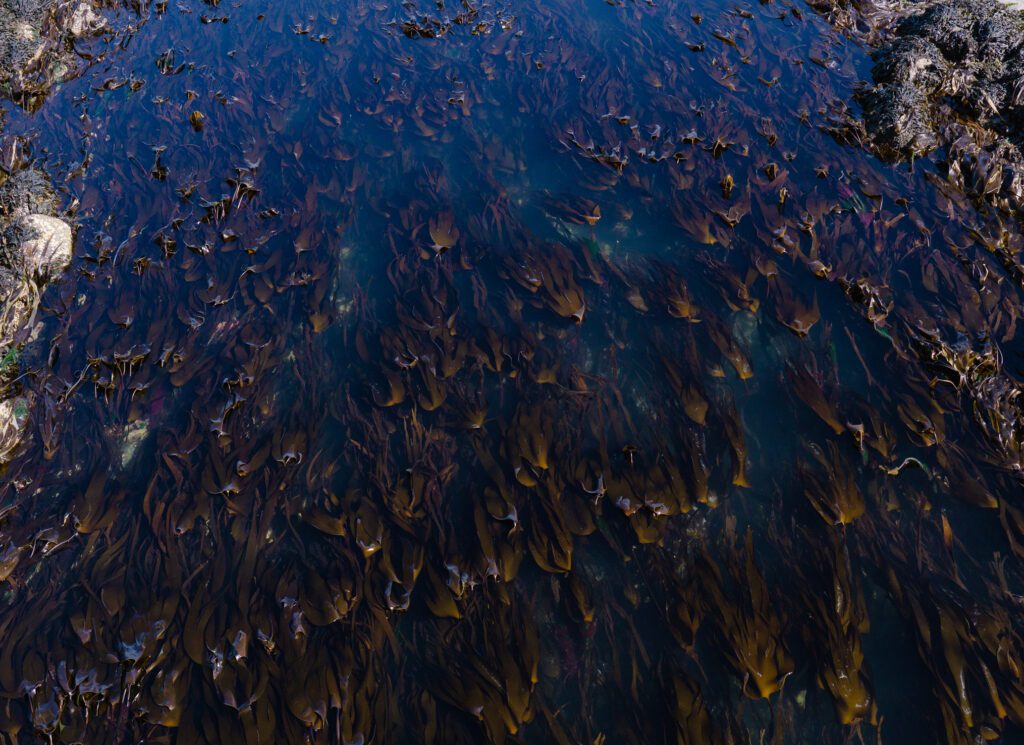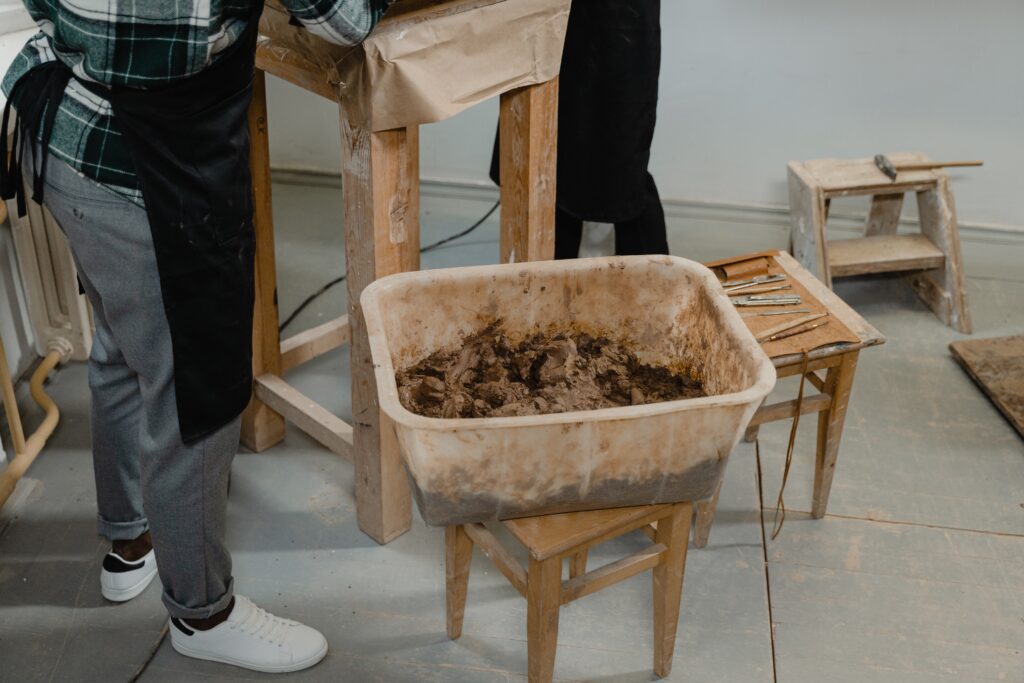
What Is Platform Earth & How Can Art Help Reverse Climate Change?
In the latest attempt of the art world to counter the effects of climate change comes Platform Earth.
Platform Earth is a charity driving material developments in ecological regeneration alongside cultural enrichment by creating active partnerships between cultural, scientific and governmental spheres.
What Is Platform Earth?
The environmental charity, founded by Petroc Sesti and Ruth Ganesh, aims to unite artists with scientists and fund marine carbon capture projects by selling artworks.
Sesti is a British artist whose work reflects art and science, focusing on the relationship between art and architecture.
Ganesh is a creative conservationist and philanthropist that has a focus on environmental issues. She’s also spent the last 15 years conceiving and producing large-scale public art exhibitions in London, Edinburgh, and New York City.
The overall mission of Platform Earth is to empower the sustainable development of natural earth systems, like forests and kelp forests, in order to cut carbon emissions alongside supporting artists.
Platform Earth aims to build a cultural footprint while also diminishing our carbon footprint.
Now, What Are Marine Carbon Capture Projects?
Carbon capture is defined as the process of capturing and storing carbon dioxide (CO2) before it’s released into the atmosphere.
Carbon Capture and Storage (CCS) is a way of reducing carbon emissions, which could be key to tackling global warming. It’s typically conducted in a three-step process involving:
- Capturing the carbon dioxide produced by power generation or industrial activity, such as steel or cement making
- Transporting it
- And then storing it deep underground.
Platform Earth strives to practice Carbon Capture through the use of marine habitats, such as kelp. Now why use marine carbon capture?
Blue Carbon and Why It Is the Answer
In the ocean, carbon sequestration, a fancy word for the process by which carbon dioxide is removed from the atmosphere, is achieved through various chemical and biological processes.
Scientists have been researching the benefit of utilizing the blue carbon cycle (aka marine carbon cycle) as a means of carbon capture.
The blue carbon cycle begins with plankton at the ocean surface using photosynthesis to convert carbon dioxide into sugars in the same way trees and land plants do on land. Sea creatures consume this phytoplankton (photosynthesizing plankton). The carbon-containing sugars eventually die and sink to the bottom of the unfathomably deep ocean, locking the carbon away over millions of years as sediment.
The chemical processes can create calcium carbonate in the water, and some organisms use carbon to build shells and skeletons. The “biological pump” initiated by surface-water plankton is the primary driver of oceanic carbon sequestration.
The carbon can be sequestered through algae and see foliage, such as kelp forests.
Scientists have found that green plants such as kelp forests capture CO2 at 20 times more carbon per acre than land forests. However, in recent years, the kelp forest populations have begun to dwindle due to an influx of carbon sequestration, stunting the kelp and expediting the process of ocean acidification.
The solution is proper maintenance and kelp farming. Introducing young kelp into the ecosystem helps diverge the carbon sequestration and the added upkeep from the human population.
What Does Platform Earth Use For Carbon Capture?

The key role of the Amazon rainforest both in sequestering carbon and supporting a rich diversity of ecosystems is well known. But equally crucial to the well-being of the planet — if less high profile — are the giant kelp forests that lie beneath the world’s oceans and line one-quarter of all coastlines.
Like their land-based counterparts, these underwater forests of brown algae are also vanishing at an alarming rate.
Now, in great part thanks to Platform Earth, some of these oceanic kelp forests — specifically those around the south coast of the UK, which had shrunk to 4% of their former size — are staging a comeback.
What Are the Benefits of Platform Earth’s Mission?
Supporting kelp has multiple effects on populations in and out of the water. Kelp promotes biodiversity and population growth of fish stocks, which in turn boosts local fisheries and economies. The seaweed also acts as a barrier to storm waves, mitigating wave erosion by 70%.
Read More: Environmental, Social and Governance: All About ESG Investing
Environmental Conservation
One of the initiatives conducted by Platform Earth was their great British Sea Forest Campaign. This campaign brings together projects protecting and restoring marine habitats on the British Coast.
Another one of the largest projects partnered with Platform Earth is the Sussex Kelp Restoration Project — a pioneering marine rewilding project.
Biodiversity
In addition to giving substantial support to the Sussex Kelp Restoration Project, including two research programs into the regrowth of kelp and tracking the amount of carbon captured, Platform Earth also played a key role in the successful 2021 campaign to ban damaging trawl fishing off the West Sussex coast, making it the largest marine protected area in the UK.
In 2021, the charity began to support ecosystem restoration and carbon sequestration in the degraded Solent waterway between England and the Isle of Wight. There are also plans to extend its activities to the waters around Jersey.
Cultural
By engaging artists as agents of change to participate in exhibitions to aid the environment, Platform Earth hopes to harness the art world’s power to restore marine habitats.
Platform Earth offers a variety of events, lectures and artists sponsorship opportunities. Aside from raising funds for its protection and conservation efforts, the organization also aids artists by providing exhibition recognition.
How Does Art Play a Role in Platform Earth?

The Platform Earth Art Collection
In the spirit of sustainability, the artworks donated by leading artists to fund Platform Earth’s environmental programs are all made using specially developed recycled materials designed to minimize their carbon footprint.
The charity’s Carbon Collection, first presented at Frieze London in 2021, consists of more than 50 editions and original works commissioned from Contemporary artists Antony Gormley, Marina Abramovic, Rachel Whiteread, Cornelia Parker, Tracey Emin, Haroon Mirza and Mark Wallinger, among many others.
Advancements in Environmental Art
Aside from engaging artists as agents of change, Platform Earth also is contributing to the artworks through research for new environmentally friendly mediums and techniques.
Research is ongoing into other sustainable materials for artists, most notably CarbonXinc, a new cement-like substance that can be used for marine and terrestrial sculptures.
This miracle material apparently sucks carbon dioxide from the atmosphere and turns it into a solid medium. “We have to have some bold ideas,” Sesti says.
In his practice, he created a CarbonXinc underwater sculpture titled The Heart of Okeanos, which will support live corals and form part of Miami Beach’s forthcoming ReefLine underwater sculpture park and artificial reef.
Read More: What Is Environmental Art?
Environmental Awareness
As the works are sold to finance Platform Earth’s “blue carbon” marine projects, new ones are constantly joining the Carbon Collection.
The work in the collection is meant to evoke ongoing concern for the health of our planet and what we, as its inhabitants, can do to mitigate the harm already done.
In 2021, the artist and designer Es Devlin created I Saw the World End, a giant three-meter-long Air-Ink work on paper that was shown at the Frieze London art fair entrance and accompanied by an edition of smaller related prints.
New editions for 2023 include contributions from Brian Eno, Mark Wallinger and Rachel Whiteread, as well as an original work by Jonathan Yeo depicting a map of the Netherlands partly submerged by predicted rises in sea levels.
The Bottom Line
From Sussex kelp to Honduras mangroves, via the polluted streets of Delhi and the studios of some of our leading artists, Platform Earth is an enterprise with big ambitions.
By arming leading artists with carbon-negative art mediums and an environmentally considered approach to exhibitions and events, Platform Earth seeks a positive, solution-based cultural movement toward achieving net zero for the arts and industry at large.